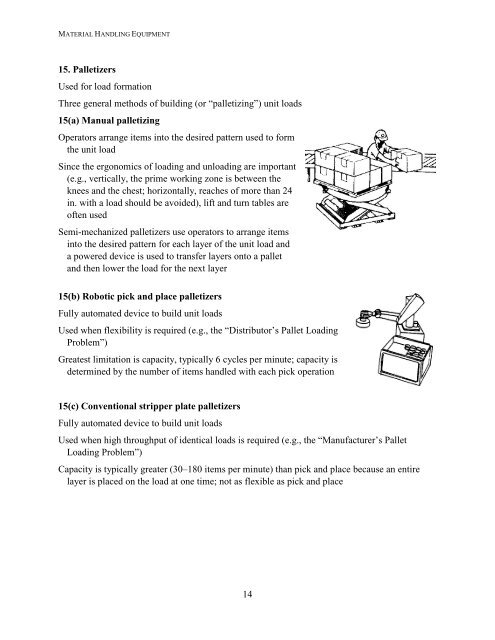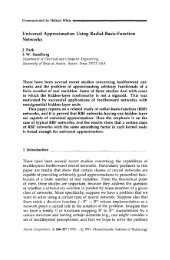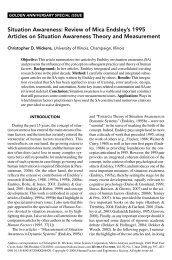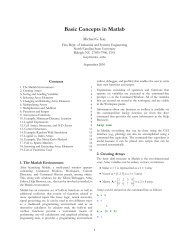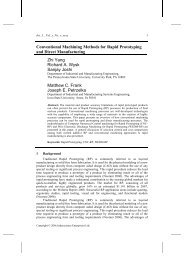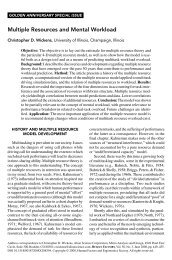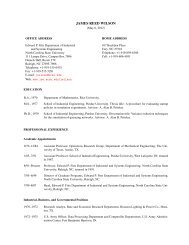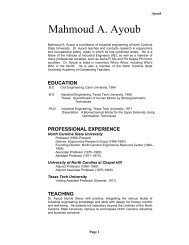Material Handling Equipment - Industrial and Systems Engineering
Material Handling Equipment - Industrial and Systems Engineering
Material Handling Equipment - Industrial and Systems Engineering
Create successful ePaper yourself
Turn your PDF publications into a flip-book with our unique Google optimized e-Paper software.
MATERIAL HANDLING EQUIPMENT15. PalletizersUsed for load formationThree general methods of building (or “palletizing”) unit loads15(a) Manual palletizingOperators arrange items into the desired pattern used to formthe unit loadSince the ergonomics of loading <strong>and</strong> unloading are important(e.g., vertically, the prime working zone is between theknees <strong>and</strong> the chest; horizontally, reaches of more than 24in. with a load should be avoided), lift <strong>and</strong> turn tables areoften usedSemi-mechanized palletizers use operators to arrange itemsinto the desired pattern for each layer of the unit load <strong>and</strong>a powered device is used to transfer layers onto a pallet<strong>and</strong> then lower the load for the next layer15(b) Robotic pick <strong>and</strong> place palletizersFully automated device to build unit loadsUsed when flexibility is required (e.g., the “Distributor’s Pallet LoadingProblem”)Greatest limitation is capacity, typically 6 cycles per minute; capacity isdetermined by the number of items h<strong>and</strong>led with each pick operation15(c) Conventional stripper plate palletizersFully automated device to build unit loadsUsed when high throughput of identical loads is required (e.g., the “Manufacturer’s PalletLoading Problem”)Capacity is typically greater (30–180 items per minute) than pick <strong>and</strong> place because an entirelayer is placed on the load at one time; not as flexible as pick <strong>and</strong> place14


